Is the economy starting to slowly turn around? Some sources say yes while others remain more hesitant on just how much. One thing is for sure though – sooner or later many businesses simply can’t hold off any longer on making critical business decisions while waiting for a strong uptick in the economy. Furthermore, customers may sooner or later say “I’m tired of this,” or “I can’t wait anymore,” or “Let’s get going” and start spending more money once again.
Will you be ready? Now remains a good time to prepare yourself and your business.
A plan designed as a platform for growth and profits must consider each of the following critical success factors:
- Money factors: positive cash flow, revenue growth, and profit margins.
- Acquiring new customers and/or distributors — your future.
- Customer satisfaction — how happy are they?
- Quality — how good is your product and service?
- Product / service development — what’s new that will increase business with existing customers and attract new ones?
- Intellectual capital — increasing what you know that’s profitable.
- Productivity — how efficient are you? How effective?
- Strategic relationships — new sources of business, products and outside revenue.
- Employee attraction and retention — your ability to do extend your reach.
- Sustainability — your personal ability to keep it all going.
For each of these factors, ask yourself these three broad questions:
1. What can you learn from last year’s experience with this factor?
What did you do right? What worked? Always start with this question. Why? Because it’s positive. That’s why! It’s shocking how people naturally drift toward the negative. How can you do more of those “right” things? How can you make them even better? How can you apply what you learned in this area to some other?
2. What is missing? What can you add to improve your efficiency and effectiveness?
Effectiveness can be stated as the ratio of OUTPUT to INPUT. Efficiency, on the other hand, is how many INPUT actions you take per unit of time. For instance, you can increase the number of calls you make per hour — that is an increased efficiency. You can increase the volume of sales for the same number of calls — that is increased effectiveness.
Setting new, specific goals for these can transform your business. Your goals should be bold and dynamic — big enough to inspire you and everyone around you. Some examples: increase last year’s sales by 12%; cut production hours 3% with no decrease in units produced; develop and ship two new products by the end of the third quarter; solve customer issues within x number of days, etc.
3. How are you going to achieve these goals?
There are a few considerations to make such as: Who will be accountable for each goal? Not you – then who – which executive/supervisor/manager/employee? Which department(s)? Some factors map directly into a specific department. For example, revenue is owned by sales and marketing. But factors like intellectual capital or customer satisfaction clearly don’t always fall onto one department.
Even so, someone still has to ‘own’ the factor. Figure out whom. If no single person is accountable – guess what – it very likely may not happen. What strategies and tactics have a good chance to realize the goal? Each target should have an identifiable path with a reasonable probability of getting you there. That path will define one or more initiatives and milestones you can put on a timeline.
What structural and procedural changes will you make relative to this factor? Does this initiative require new people? Do you need new job descriptions, or to add managers?
Can you do it all at the same time? Most businesses don’t have the resources for that, so you may need to figure out your timing too by creating a well thought out plan of action to complete this task. Need help or an independent review of your plan? Give us a call, we’re here to help.



